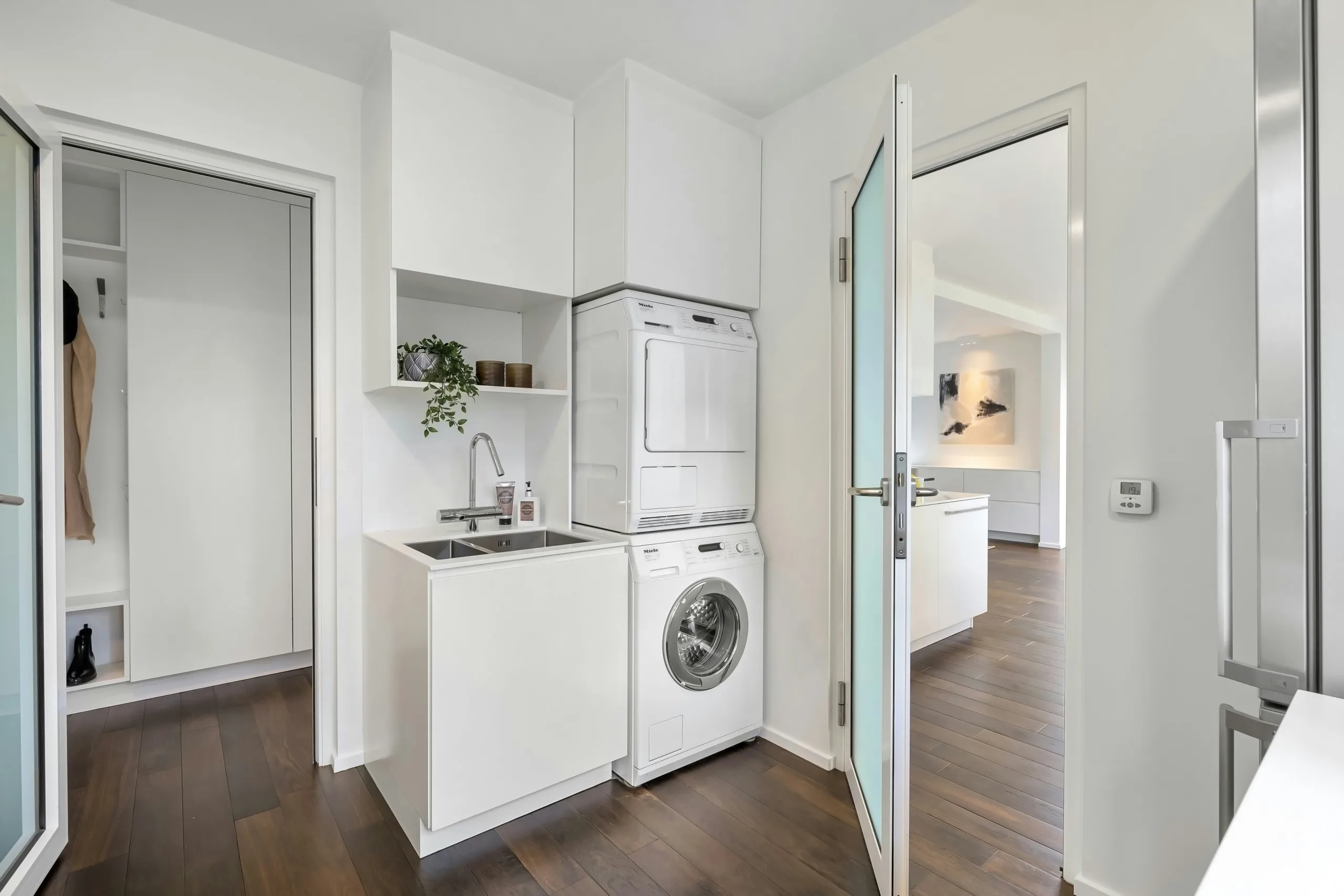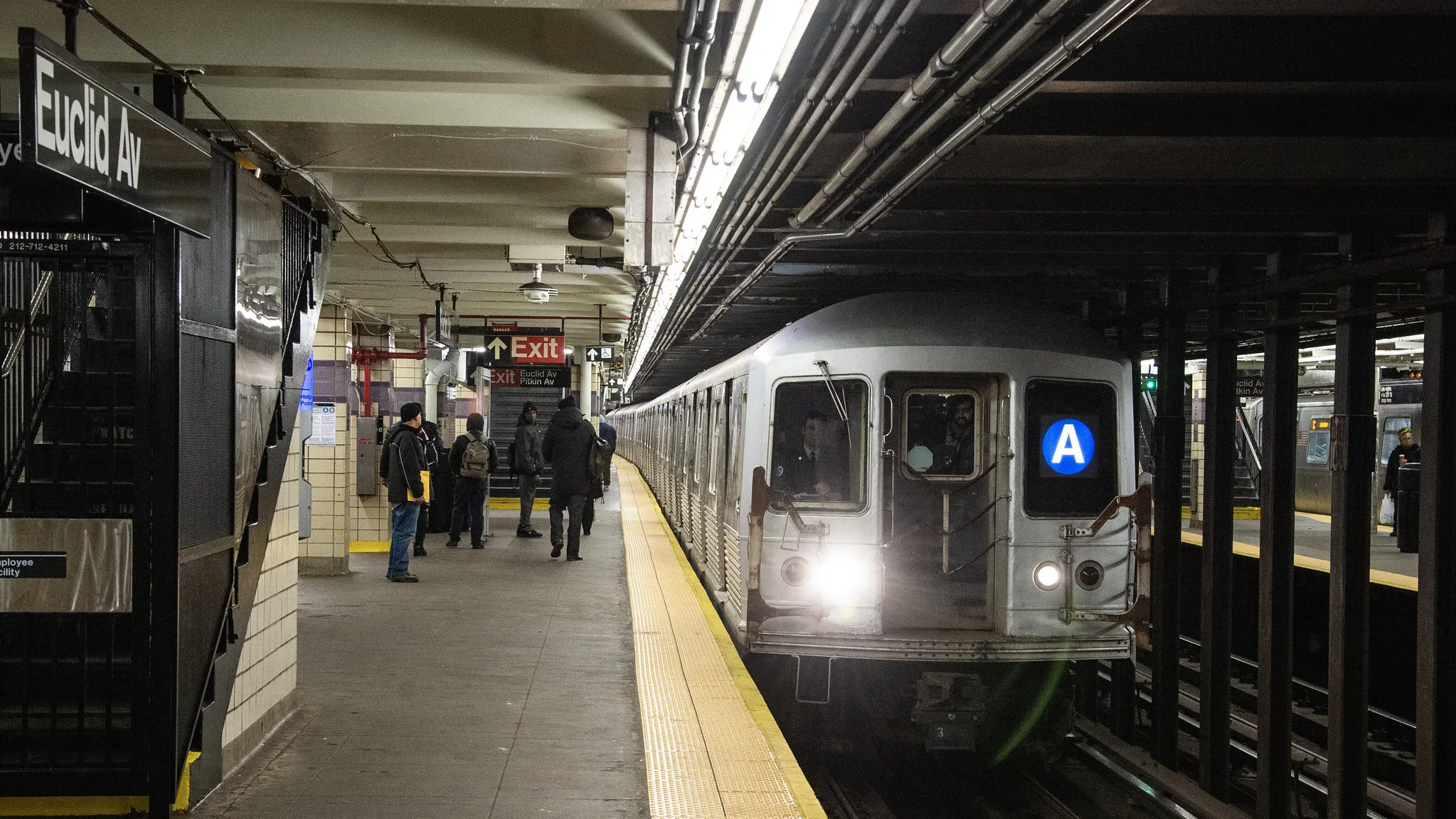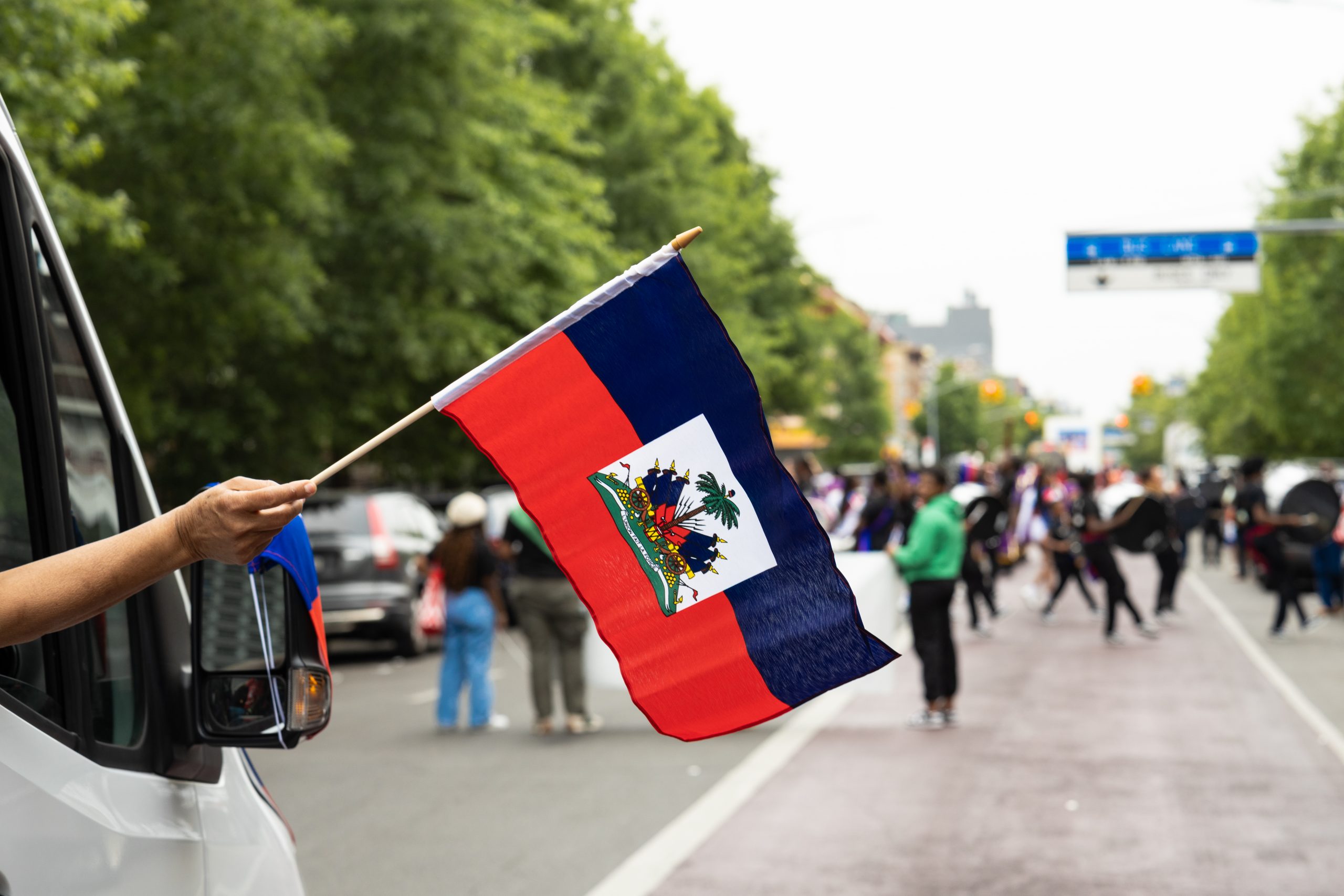Of New York’s 80,000 registered nurses, 16% are immigrants, and a significant portion are from the Caribbean, according to the Migration Policy Institute.
They serve in hospitals, nursing homes and home care agencies, and often in neighborhoods with high immigrant populations and low access to care. Documented talked to three nurses, from Dominica and Jamaica and Haiti, to learn about their experiences.
A Journey from Dominica to Brooklyn’s ER
When Shanita Scotland arrived in New York from Dominica in 2003, she envisioned a future in medicine or engineering. But her first steps in the city were “shell shocking,” going from her warm, green, lush island to a bustling city during cold weather. She found comfort, however, in New York’s Caribbean markets, where she could find many of the same foods she was accustomed to in her home country.
As she was adjusting to her new environment, Scotland began to think seriously about her long-term goals. “I initially thought of medical school. I’ve always wanted to do anything in medicine,” she said. She had been an elementary math teacher at a vocational school in the St. Joseph parish in Dominica.
But she could not afford medical school in New York, where she had moved with her mother. Her first challenge was to secure a job that would enable her to pay her bills. That led her to a clerical position in a small Jamaican-owned medical center in Atlanta, Georgia.
“It was pretty much what really sparked my interest in nursing. Rather than going to medical school for eight years, I could just go to nursing school for four years,” she said.
She began pursuing a nursing career, earning her Registered Nurse (RN) certification in 2012 from Long Island University (LIU) in Brooklyn.
While a LIU student, Scotland participated in multiple health initiatives abroad—in Sierra Leone, assisting women ostracized due to medical conditions, and in Costa Rica, providing care to refugee children. In New York, she volunteered with the Red Cross after Hurricane Sandy in 2012, assisting elderly residents in Far Rockaway, Queens.
At the NYU Hospital in Brooklyn she worked in the general emergency room before transitioning to the pediatric ER.
“That’s where I found my love for nursing. In the beginning, I was trying to figure out where I wanted to be. Because of my love for children and teaching, I decided to stay in pediatric ER, where we are constantly teaching,” she said.
Scotland believes that her Caribbean origins deeply influenced her caregiving approach. Growing up in Dominica, she learned the values of respect, cleanliness, and community care. She said that she treats patients like family, applying the Caribbean principle of respecting elders and maintaining a clean, orderly environment.
In pediatrics, she uses a holistic approach by being playful with children, building trust with both patients and parents before medical interventions. Her cultural upbringing taught her to be patient, authentic, and create comfortable relationships with patients.
“Because of the values, I treat my patients the same way I would treat my mother,” she said. “I cannot start my shift giving you medication, and somebody did not wash your face or wash you up in the morning.”
That cultural background also fosters trust with patients. “In Brooklyn, what I noticed is when a patient sees a nurse from the Caribbean, they perk up,” she notes, especially among elderly patients who feel more comfortable sharing concerns with someone who understands their cultural nuances.
For seven years, Scotland has been navigating between the ER, the pediatric unit and the pediatric ICU. But she’s also back at Long Island University, teaching aspiring nurses as an adjunct professor, where she’s been teaching pediatric labs and pediatric clinicals since Spring 2024.
Beyond her clinical work, Scotland co-founded Medical Professionals on a Mission in 2017, a nonprofit providing humanitarian assistance to Caribbean countries. The organization has already donated a fully equipped simulation lab to Dominica’s nursing school, aiming to elevate nursing education standards. “That was my way of ensuring that the nurses in Dominica get the same level of education that we get here in the U.S.,” she said.
From Paramedic to Nurse Administrator: Natasha Simone Samuels’ Evolution
“My mom wanted me to become a nurse, and I was defiant. I did not want to become a nurse. I wanted to be a police officer working with forensic science.”
The first time Samuels performed CPR, she trembled not because of fear, but because the woman lying on the floor of the Wadlbaum’s supermarket at Ralph Avenue in Brooklyn reminded her so much of her mother. It was her first call coming out of the Fire Department of the City of New York (FDNY) academy. Under the supervision of two colleagues, she followed the procedures by doing compressions, bag-valve-mask ventilation and rescue breaths with tears in her eyes.
“I was like: Is this what my mom went through? I was trying to replay what my mom went through,” she said.
Her mother worked as a hairdresser and Licensed Practical Nurse in East Flatbush. She wanted Samuels, her first daughter, to become a nurse, but Samuels wanted a different path.
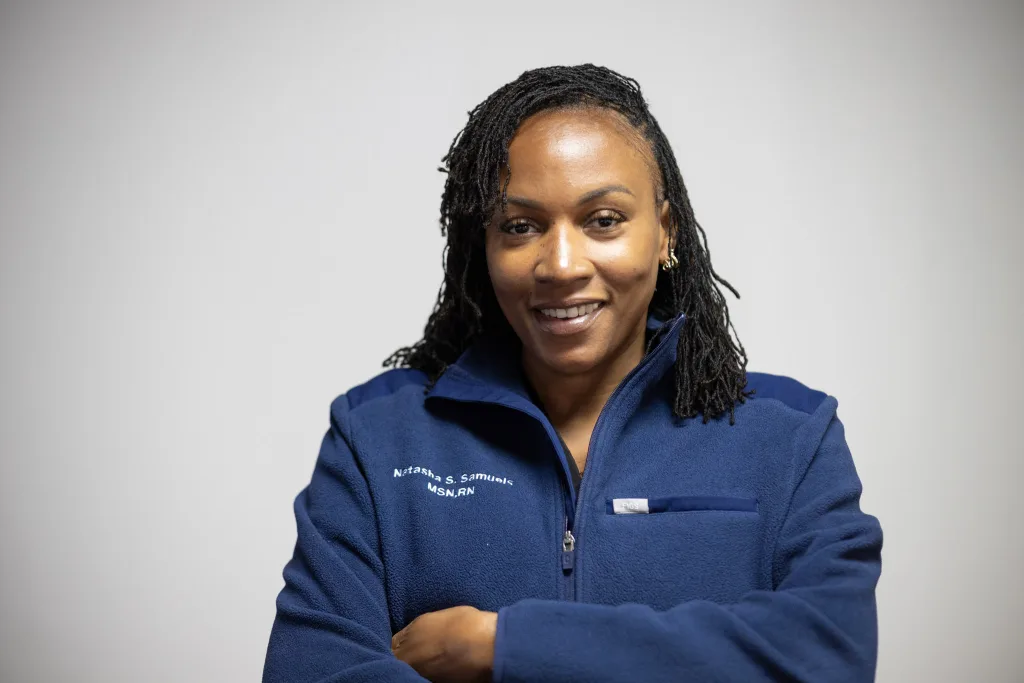
After high school, she went to Medgar Evers College to pursue a degree in biology in order to become a police officer working in forensics. In 2003, she even passed the FBI screenings to start working as an intern the following year, but the sudden death of her mother in December the same year from a massive heart attack shifted her career plans.
“I became an aunt, a sister and a grandma overnight. I became everything to my sister and my nephew, and we had to push forward through there,” she said.
Her father was in jail at that time and her 19-year-old sister had just had a baby.
Samuels said she was very lost the first year, until a young lady she met in a bus told her that she could become an EMT as she holds a degree in biology. She became an EMT in 2006, and because of her high score on the state test, she secured a job at the fire department. Four years later, she became a paramedic.
For 15 years, Samuels served the five boroughs of New York, responding to some of the most harrowing calls the city had to offer, like suicides, gunshot wounds, elderly emergencies, and pediatric cardiac arrests. “There’s nothing I haven’t seen or done,” she said.
In 2018, after feeling stagnant at FDNY and managing type 2 diabetes brought on by stress, Samuels made the leap to nursing.
“I knew I had to do something to support myself. I feel like everything happens for a reason, and I love what I do now, like I do it from my heart,” she said.
Despite everything she’s seen, she’s anything but numb. “Even with all that experience, I’m still touched,” she said. “I just don’t show it in the field.”
She took her first job at Bellevue Hospital to continue building toward a city pension, then transitioned into contract nursing. The move gave her something she hadn’t had in years: autonomy.
Now she chooses her assignments, takes breaks between contracts to prioritize her health, and has time to spend with her son, a pre-law student at the University of Albany.
“As a contract nurse, I’m in control,” she said. “I control when I eat, when I work, and when I rest. In the ambulance, you can’t control anything.”
Her love for emergency care led her to ER nursing, where the adrenaline and unpredictability remind her of her paramedic days. The only difference now is that she gets to follow her patients beyond the ride. “I like staying on my toes,” she said. “Critical thinking. The rush. The constant learning. It keeps me alive.”
The daughter of Jamaican immigrants, Samuels’ identity is deeply rooted in her Caribbean upbringing. She speaks fluent patois and still visits Jamaica regularly. Her cultural background has been a source of connection with her patients, especially in Caribbean enclaves like East Flatbush.
“When they hear I’m from the Caribbean, it gives them a sense of relief,” she said. “Like, ‘She’s going to do right by me.’”
But that shared culture comes with complications. “Sometimes people try to take advantage,” she said. “They expect more. I just want people to know that Caribbean nurses are here to help and we’ve worked hard to be where we are.”
Today, Samuels holds a Bachelors and a Masters in nursing. She’s on track to finish her doctorate in December 2025. She recently completed a contract with Mount Sinai Beth Israel as a nurse administrator. She is currently taking a break, something she allows herself after every assignment, and is planning her next move.
Her main goal for now is to become a chief nursing officer within five years.
“My mom wanted me to be a nurse. I am a nurse. I don’t think she would ever [have dreamt] that her daughter, one day, hopefully, in December, will be a doctor,” Samuels said.
Marie Guerline Paul’s Path from Haiti to Healthcare Excellence
When Dr. Marie Guerline Paul arrived in the United States at age 15, the cold and rainy streets of New York felt like a completely different world compared to her quiet, sheltered upbringing in Port-au-Prince, Haiti.
“I remember asking to go back. I need to go back to my country,” Paul said of her first day at school. “But it never happened.”
A few decades later, she has become a pillar in New York’s healthcare and academic communities. Paul is a nurse practitioner with a doctorate in nursing science, a faculty member at Hunter College and the founder of the Haitian Nurses Network.
Her journey into nursing began at the age of 17, working as a home health aide. “That was the pillar of working your way up,” she said. “There were steps that you could take to take [yourself] there.”
From home attendant, she advanced to certified nursing assistant, then to licensed practical nurse in 2006, registered nurse in 2011, earning her Bachelors degree in 2015, her Masters in 2017, and finally her doctorate during the COVID-19 pandemic.
Paul, who always dreamed of becoming a doctor, views her degree in nursing as the realization of that childhood ambition. “Although I’m not a physician, I am a doctor in nursing practice,” she said.

While pursuing her Licensed Practical Nurse degree in New Jersey, she worked night shifts as a Certified Nurse Assistant and attended school full time while caring for her young children. This pattern continued as she worked and studied through every degree. “It was never an easy journey,” she said.
Paul pursued the highest credential she could in part for the flexibility it affords. “The higher your education is, the more flexibility you have,” she said.
She has worked in long-term care facilities, medical-surgical units, post-anesthesia care, and emergency rooms. She has also served in leadership roles, including director of nursing.
Paul said that her Haitian heritage is central to the care she provides, especially for Creole-speaking patients in New York. “They want representation. They want somebody who looks like them, speaks like them and behaves like them, who they can trust,” she said. “My patients are always happy to see me.”
Though she said she has not personally experienced racism in care settings, she has witnessed the profession’s internal culture. “There is some bullying in the workplace,” she said. “They say, ‘nurses eat their young.’ I have seen it.”
Those early encounters informed her approach to leadership. “I always want to grow,” she said. “So if you’re in this position, let me do it myself, so I can treat the nurses better, so I could teach the nurses better.” And she often reminds her students: “Do not be a bully nurse. Do not become one.”
Her commitment to mentorship goes beyond the classroom. After the 2010 earthquake in Haiti, she founded the Haitian Nurses Network for a coordinated and professional response to future crises.
“I thought it was going to be local, only for Haiti,” she said. “But we are expanding, knowing that the need is far greater worldwide than just in Haiti.”
The network has since carried out missions in Haiti, the Dominican Republic and different African countries, offering health fairs, food drives, and clothing donations in collaboration with other organizations.
Paul has observed a clear generational shift in the profession. More young people are entering nursing, many straight out of high school, and more are pursuing advanced degrees.
“Years ago, the nurses used to have an associate and be okay with it. Now that’s not the case. Everybody is looking into growth,” she said.
To new immigrants, particularly Haitians, who aspire to become nurses, Paul urges passion and preparation. “If you really know this is your passion, that’s where you want to be, you need to have a good advisor,” she said. “Going in blindly will take you on too many roads, just like I did, too many unnecessary roads.”
Despite the challenges, nursing remains a popular and vital career path for many immigrants.
“New York State Nurses Association (NYNSNA) is proud that so many Caribbean nurses have answered the call to serve as nurses in New York City and across the state and that we have such a diverse, multilingual group of nurses as members,” said NYSNA President and Haitian immigrant, Nancy Hagans, in a statement. “Their contributions are vital to our healthcare system and essential to providing the best care possible.”
Her perspective is also shaped by her experiences navigating the healthcare system as an immigrant.
“Growing up in New York as a Haitian immigrant in the seventies and eighties, I saw firsthand the importance of being seen by medical professionals who understood my community’s culture and needs. My early experiences as a patient brought me to nursing, where I, like so many NYSNA nurses, wanted to make sure every patient is treated with the dignity and respect they deserve,” she said.

